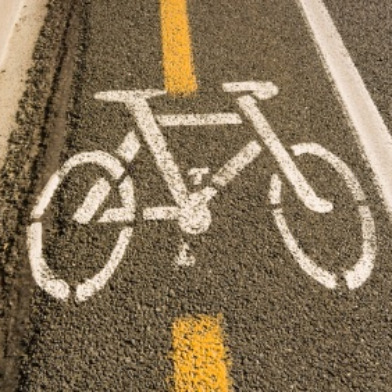 The Bicycle Plan pedals its way into the Board of Supervisors’s chamber today, but its freewheeling odyssey is still far from over.
The Bicycle Plan pedals its way into the Board of Supervisors’s chamber today, but its freewheeling odyssey is still far from over.
At issue today is NOT whether or not the MTA can finally begin striping bike lanes, placing bicycle racks and telling motorists to go fuck off please be prepared to share the road, but whether or not the city has finally done its due diligence under California law and performed an adequate environmental impact report.
Not performing (and that’s really the wrong word, but for some reason we like the mental image of engineers up on stage in period garb doing calculations with dramatic effect) an EIR was what tied up the bicycle plan in court, got a judge to slap an injunction on the plan faster than you could say “Death monsters ahead” and brought us to where we are today.
What could stop the bicycle plan’s forward motion this afternoon? If the Board of Supervisors feels that the EIR was somehow inadequate or poorly-publicized, they could ask the MTA or the Planning Department to do more analysis or more outreach. But, in the light of substantial media coverage and the size of the blinking EIR itself — trying to open just the 392 pages worth of the Comments and Responses section crashed our browser — and supervisors’ vocal support of the plan, this seems unlikely.
Once the EIR clears the Board, the Board must then approve the appropriate changes (planning and zoning code amendments) to city law, which, once approved, go on to Mayor Gavin Newsom for signing. As soon as that’s done, City Attorney staffers will wheel the dozen or so bankers boxes full of EIR, plan and everything else from City Hall across the street to the courthouse, where City Attorney Dennis Herrera will ask Judge Peter Busch to lift his injunction. Busch will likely schedule a hearing, both sides will file briefs, and both sides will be heard whenever that is — could be weeks, could be months, according to SF Bicycle Coalition program director Andy Thornley.
Note that the EIR said exactly what Anderson’s been contending all along — that the Bicycle Plan will have a big impact on non-bicycle traffic throughout the city. THEN, and only then, can the MTA start striping bike lanes.
Today’s hearing “is not about whether or not bikes are good or bad,” Thornley reminds us. “It’s whether or not the EIR process was thorough and accurate — and we’re pretty comfortable” that it was.
In fact, “this has got to be one of the most famous CEQA” processes ever — and as someone who’s written stories for three different publications on said plan, might be forced to agree.
Even so, there will still be vocal opposition to the EIR. A South Beach condo dweller will protest the proposed removal of Second Street’s southbound left-hand turn lanes, and anti-bike plan crusader and blogger Rob Anderson, a Western Addition resident whose legal challenge forced the EIR, has told the Board that the EIR “is inadequate on so many levels I don’t have time to enumerate them” (which is a shame considering that’s what we asked him to do, but oh well. Read Anderson’s reaction, and our e-mail to him, here).
Note that the EIR said exactly what Anderson’s been contending all along — that the Bicycle Plan will have a big impact on non-bicycle traffic throughout the city. Cars will have fewer places to park and fewer lanes in which to drive; pedestrians will have extra hazards to negotiate; and Muni vehicles’ arrival times will be slowed and bus trips will take longer.
Cyclists freely admit all of this, and they don’t care. Because — well, because when you have a small city like this and you want to put in a bike lane, something else has got to give. The MTA knows this too, and they are fine with it.
“It’s a case of balancing,” Thornley said. “For the past 60-70 years, the city’s been adjusting itself for it to be easier and more convenient to drive. [The Bike Plan] is a very small adjustment back in the other direction.”
Anderson thinks that if the Bicycle Plan were presented to the voters, it would lose handily. Is this the case? The turnout today could be an indicator. We’ll let you know.
Note: The author of this piece owns a disabled car and a busted bike. He walks, takes Muni and begs for rides to get around town.
Like this story? Then please consider supporting the Appeal’s independent City Hall reporting at Spot.us.









